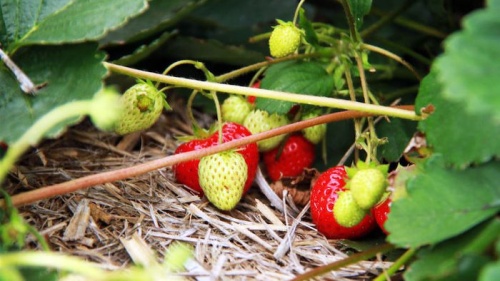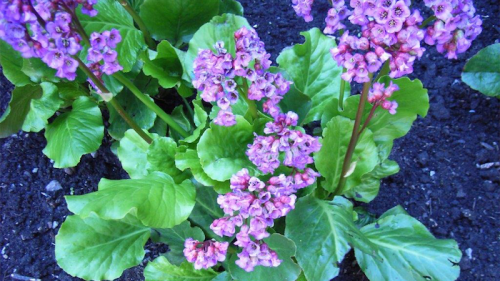
STRAWBERRIES would have to be the world’s most popular fruit and now’s the perfect time to replant strawberries that have been in for more than three or four years or plant new ones.

When replanting with new stock it’s important to replace all the soil in the bed or, better still, find a new spot for them. In replacing the soil, replace it to at least 30 centimetres deep, ideally with soil from your own compost heap mixed with new soil.
The soil should be slightly acid and to achieve this simply dig in plenty of organic matter, such as those fallen leaves now starting to rot. A handful of blood and bone fertiliser to each square metre is also beneficial.
Equally important is to only buy certified virus-free plants from a garden centre, which means not accepting specimens from well-meaning friends who may be thinning out their plants. Virus-free plants will have a government certification tag plus the name of the grower.
Ideally, make mounds of soil to form a ridge about 50 centimetres wide and flattened on the top. If space allows, form a series of these ridges about two metres long parallel to each other. Cover the ridges with black plastic stretched tight and held down along the edges with soil.
Next cut a series of crosses in the plastic about 10 centimetres across with the plants spaced about 20 centimetres apart down the centre of each ridge. I use a flat-bladed knife laid across the roots and gently push them through the plastic into the soil. The alleys between the ridges must be kept weed free, ideally with a mulch of lucerne hay, straw or pea straw.
Feed initially with Maxicrop Seaweed Plant Nutrient or Neutrog Seamungus or Eco-aminogro, all in liquid form and certified organic. Personally, I like to keep chemical fertilisers well away from all edible crops. Increase the frequency of feeding once the first flowers appear in early spring.
The main pest of strawberries is snails and Maxicrop’s Snail and Slug Killer is recommended because it is environmentally friendly and doesn’t harm beneficial insects. It also contains no dangerous poisons, which makes it safer around pets and native animals.
The other strawberry problem can be mildew for which the answer is eco-fungicide.
The most popular strawberry is “Red Gauntlet” of which, depending on the weather, picking starts about mid-November. “Tioga” is an earlier variety with picking starting in October and “Cambridge Favourite” is also an older, earlier variety.
Strawberries, like all berry fruit are enjoyed by birds, so don’t forget to net them.

THE toughest of the tough aptly describes Bergenia cordifolia or commonly called Elephant’s Ears due to the shape of the leaves. It originates in the wilds of Siberia and Mongolia and it’s an amazing plant with huge, soft-looking leaves that survive the extreme cold of those regions. The bright-green leaves change to shades of purple in the cold. This plant was popular in 20th century gardens lining paths to the front door or along the driveways on country properties. In its native areas it flowers in early spring and in this district it provides flowers from mid-winter. With breeding, a variety of flower colours are available from garden centres.
TECHNICALLY, roses can be pruned any time after flowering, but most people tend to follow the traditional time at the end of August/early September. The Horticultural Society of Canberra will conduct rose and fruit-tree pruning workshops on Saturday, July 28, 10am-12.30pm at the Horticultural Society’s Trial Gardens at the corner of Battye and Purdie Streets, Bruce. There’s also a rose-pruning demonstration on Sunday, July 29, 1pm-3pm at 1 Spence Place, Hughes.
Jottings…
- All berry plants are in stock at garden centres for planting now, ie raspberries, black and red currants, and gooseberries to name a few.
- Not sure what to plant when? All the answers are in the “Canberra Gardener” published by the Horticultural Society of Canberra and available from bookshops and most newsagents.
- In the event of severe frosts this winter, don’t be tempted to prune off frost damage from plants. Leave it until mid-spring.
Who can be trusted?
In a world of spin and confusion, there’s never been a more important time to support independent journalism in Canberra.
If you trust our work online and want to enforce the power of independent voices, I invite you to make a small contribution.
Every dollar of support is invested back into our journalism to help keep citynews.com.au strong and free.
Thank you,
Ian Meikle, editor




Leave a Reply